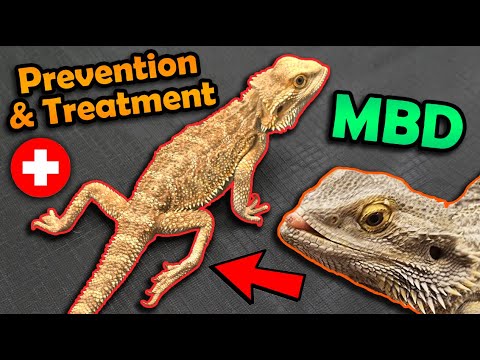What is metabolic bone disease?
Metabolic bone disease is a common problem in bearded dragons. The most common symptom is a softening of the bones, which can lead to fractures. In severe cases, the disease can cause deformities and paralysis.
There are many causes of metabolic bone disease, but the most common is a lack of vitamin D3. This vitamin is essential for calcium absorption, and without it, bones can become weak and brittle. Other causes include kidney disease, liver disease, and certain types of parasites.
The best way to prevent metabolic bone disease is to ensure that your bearded dragon gets enough vitamin D3. This can be done by providing them with plenty of sunlight or artificial UVB light. You should also feed them a diet that includes calcium-rich foods such as leafy greens and insects.
Bearded dragons and MBD: how does it affect them?
MBD can cause deformities of the skeleton, muscle weakness, and paralysis. It is often fatal if left untreated. Early diagnosis and treatment are essential for the best possible outcome.

Causes of MBD in bearded dragons
Metabolic bone disease (MBD) is a common condition in captive bearded dragons (Pogona vitticeps). MBD is caused by a lack of calcium and vitamin D3 in the diet, which leads to impaired bone growth and development. Exposure to artificial light sources (such as fluorescent lights) can also contribute to MBD, as these lights do not provide the ultraviolet B radiation necessary for vitamin D3 synthesis in the skin. Treatment of MBD typically involves dietary supplementation with calcium and vitamin D3, along with exposure to full-spectrum sunlight or artificial lighting that emits ultraviolet B radiation.
Symptoms of MBD in bearded dragons
Metabolic Bone Disease (MBD) is a common problem in captive reptiles, and bearded dragons are no exception. The most common symptom of MBD is loss of appetite, followed by lethargy and weight loss. In more advanced cases, the reptile may suffer from paralysis and deformities.
While it can be difficult to diagnose MBD early on, paying close attention to your pet’s behavior and appetite can help you catch it early.
If you suspect your bearded dragon has MBD, take them to the vet for a checkup as soon as possible. Early diagnosis and treatment is crucial for preventing serious health problems down the road.
Diagnosing MBD in bearded dragons
Symptoms include softening of the bones, deformities, and fractures. A veterinarian can diagnose MBD with a physical examination and x-rays. Treatment includes giving the dragon supplements and exposing it to UVB light.
Treatment of MBD in bearded dragons
There are several treatment options for MBD, but the most effective is to provide your bearded dragon with a diet that includes plenty of vitamin D3 and calcium. You can also give your bearded dragon supplements, such as vitamin D3 and calcium pills, to help correct the deficiency.
If your bearded dragon is suffering from MBD, it is important to seek treatment as soon as possible. With proper treatment, most dragons make a full recovery and go on to live healthy lives.
Conclusion
Metabolic bone disease (MBD) is a common problem in captive reptiles, especially in fast-growing species like bearded dragons. MBD occurs when the body cannot properly metabolize calcium, resulting in softening of the bones and deformities. While MBD can be caused by several different factors, inadequate diets are the most common cause in captive reptiles.
Most cases of MBD can be prevented by providing a well-balanced diet and adequate UVB exposure. However, once MBD has developed, it can be difficult to treat. If your bearded dragon shows signs of MBD, take them to a reptile vet for diagnosis and treatment options.

